Light Blues, Dark Blues
It’s an odd reflection of the modern world that you can see far more of many events by staying away than by going, as was illustrated by today’s Oxford vs. Cambridge Boat Race. This was the seventieth year that the race has been televised, one commentator mentioned, but the degree to which cameras are now everywhere is extraordinary. Since the race passes Barnes, a few blocks over, Elaine walked down in the rain to watch from the river bank, while I stayed at home working on a new project for the World Energy Council. But simpy by turning to the television and snapping away at the screen, I could get more intimate – if somewhat granular – images of the race than Elaine could with the same sort of camera.
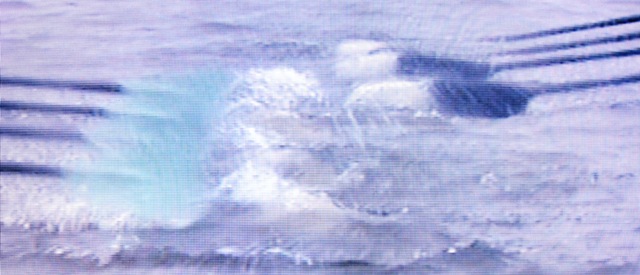
Light and dark

Ahead by more than a nose

Melee 1

Melee 2

Flash

The moment that …
Skoll World Forum 5
I have no idea how it happened, but during the fifth Skoll World Forum on social entrepreneurship this week, I managed to slice open a knuckle. It happened when my mind was elsewhere. The theme of the event, held at the Saïd Business School in Oxford, was culture—and I was talking over lunch with an American who was trying to persuade me to help Disney (who have played a key role in defining our consumer cultures) engage the rapidly evolving world of social and environmental entrepreneurs. It was he who kindly pointed out that I was bleeding profusely, which later struck me as a metaphor for some of the challenges the world now faces—and which Al Gore would spotlight in an extraordinarily speech the next morning.
In the case of our planet, we have managed (without intending to) to slice into our global knuckles and knees, with the result that tropical forests are shrinking, fisheries collapsing and the polar ice-caps melting. Not much new there. Indeed, Jeff Skoll, who co-founded the online market eBay, introduced Gore by recalling the foreword the former US Vice-President had written in 1992 for a new edition of Rachel Carson’s paradigm-shifting book Silent Spring, published three decades earlier in 1962. At the time, Skoll noted, Carson was described as “hysterical” by the chemical industry and some of the scientific community. In the same way, many of the social and environmental entrepreneurs assembled in Oxford have been described as “crazy,” even by their family and friends—because they propose solutions to problems that most people see as insoluble. These are the extraordinary people who we spotlight in our new book, The Power of Unreasonable People.
As my finger continued to bleed, I was painfully aware that I was missing the start of the second of SustainAbility’s sessions on how to build successful partnerships between such actors. We had developed the sessions with the Skoll Foundation and two other leading organisations, the International Business Leaders Forum (IBLF) and IDEO, the hugely influential international design company. So successful were our sessions—and so great is the interest of social entrepreneurs in working with committed companies—that there were queues to get in, with even some leading entrepreneurs unable to gain entry.
There were queues, too, for other key sessions, particularly for the one with ex-President Jimmy Carter and the closing session featuring Al Gore. Though there was a strong sense, as Skoll, Foundation President Sally Osberg put it, that there are no “silver bullets,” there was an extraordinary degree of optimism about the potential to bring the world of the best social entrepreneurs to scale.
For me, one of the most fascinating presentations in that final session came from Paul Collier, author of The Bottom Billion: Why the Poorest Countries Are Failing and What Can Be Done About It (http://users.ox.ac.uk/~econpco/). Interestingly, he argued that the direct markets represented by the world’s billion poorest people are “tiny.” Or at least they are tiny if we think of these people as consumers, but it could be very different if we think of them as producers. He proceeded to give some remarkable examples of how countries—whether coastal or land-locked—could create clusters of customized production, like the single town that now controls 65 percent of world button production.
As Acumen Fund’s Jacqueline Novogratz put it as the meeting drew towards a close, markets are “the best listening devices” we have for understanding people’s needs. Many of the world’s biggest social, economic and environmental challenges exist precisely because there are market failures, areas where the economy is both deaf and blind. So the third year of our Skoll Foundation-funded work on entrepreneurial solutions will switch from the social entrepreneurs (covered in our 2007 survey, Growing Opportunity, see http://www.sustainability.com/insight/skoll_article.asp?id=937) and their counterparts inside companies (who we spotlight in a new report called The Social Intrapreneur, see http://www.sustainability.com/insight/article.asp?id=1457) to the potential future markets for the sort of solutions that an increasingly populous and carbon-constrained world will demand.

Sonidas de la Tierra in the Sheldonian

Manuela (Fremy) posts it

Work in progress

White boarded

Session 1

Sophia on camera

Reflective monment, Richard Kelly of IDEO presiding

Quiet moment
Friday, March 21, 2008
2degrees et al

Back this morning from two days in Oxford. Initially had lunch with Sophia (Tickell) at The Jam Factory, then across the road to the Said Business School for the first advisory board meeting for 2degrees (http://www.2degreesnetwork.com/index.html), founded by serial entrepreneur Martin Chilcott. Then, yesterday, much of the day spent with Elaine, Geoff (Lye) and Sophia, before dinner in the evening with Sophia and her husband James.
 Geoff and Elaine
Geoff and Elaine
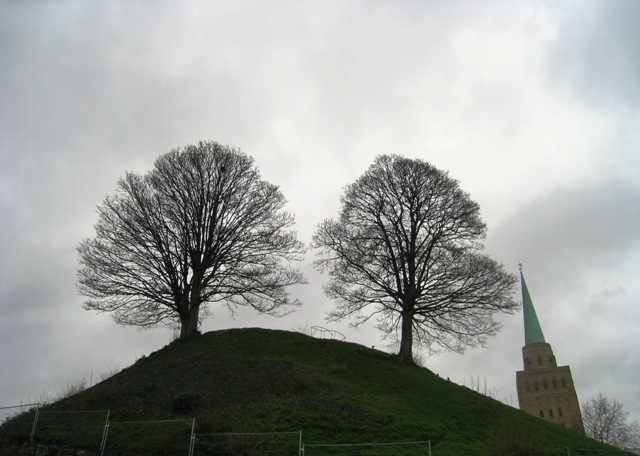 Near the castle
Near the castle
 My hat and coat on Geoff’s Klimt mannequin
My hat and coat on Geoff’s Klimt mannequin
Tuesday, March 18, 2008
Office hunt
Sam, Elaine and I spent the morning visiting some of the offices that are on the short-list for our new organisation, Volans Ventures. One, which I particularly liked, was highly reminiscent of the offices Earthlife had in Bedford Square over 20 years ago – and is also owned by Bedford Estates.


Democracy & Sustainability
Can we vote our way to a sustainable future for a world of 9-10 billion people—or are new forms of leadership (even forms of dictatorship) going to be necessary?
Is China—with little need to consult its people—or India—with its flawed democracy—best placed to move towards more sustainable forms of development?
Are the time-scales of democratically elected governments appropriate for delivering sustainable development?
If not, what needs to be done—and by whom?
These are some of the questions we (The Environment Foundation, which I chair, and The 21st Century Trust, with support from The Esmee Fairbairn Foundation) have begun discussing at http://democracy.sustainability.com/.
Today we held a series of events at the Science Museum’s Dana Centre on the same issues – with a particular focus on London. Among the speakers was Doug Miller of GlobeScan, who brought along the Rt Hon Joe Clark, a long-serving Foreign Minister for Canada – and, briefly, that country’s PM. A particularly interesting session saw Sara Parkin presenting one of her former students, Jenny Pidgeon, now with Upstream.
Later, I found myself recruited onto the final panel at the last moment, chaired by Lord (Chris) Patten and also including Sara Parkin and Charles Secrett. Tom Burke did a couple of hugely insightful sessions. To minimise disruption, I didn’t use flash, which explains the suitably blurred effect in some of the images. Walked back to South Kensington station with Tessa Tennant.

Sara Parkin en route to be YouTubed

Hugh Knowles and Sara

Dana Centre 1

Dana Centre 2

Charles Secrett, Craig Bennett and statue

Preparing for ‘Question Time’
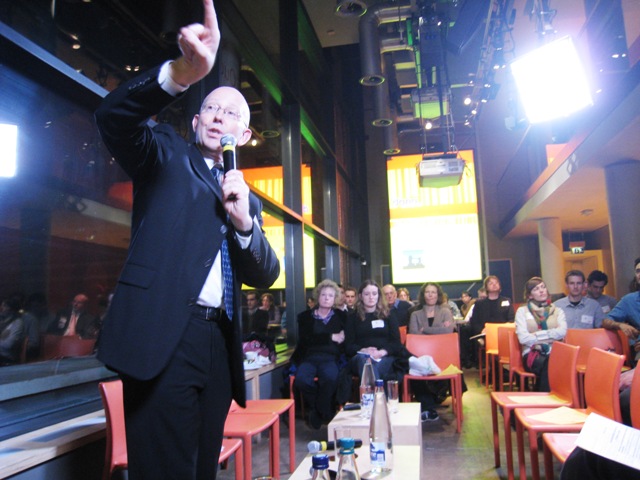
John Lotherington of The 2st Century Trust

Sara, Charles, Chris Patten

Professor Chris Rapley of The Science Museum sums up
Monday, March 17, 2008
Aflatoun launches
Back late from highly impressive launch of Aflatoun (http://www.childsavingsinternational.org/) in Amsterdam. Last night, after a session with the impact metrics committee that I chair, we all went to dinner in a mini castle. Then today I chaired a lively session in the afternoon with a panel of bankers from around the world. Then a fair number of us climbed into a canal boat and went cruising through the drizzle. After a rushed – but delightful – dinner at an Indonesian restaurant in the city centre, I headed off to the Schipol.








Saturday, March 15, 2008
ECO:nomics
Just back, h3 Los Angeles, from the Wall Street Journal ‘ECO:nomics’ conference in Santa Barbara, California, which was sub-titled ‘Creating Environmental Capital’ (http://www.economics.wsj.com/index.php). On the way out, I was bounced from an ANZ flight to LAX at Heathrow, when the plane had to turn back after an engine failed. The steward on the flight home told me he had been on that problem flight and that they had had an interesting hour-and-a-half flying around while they dumped enough fuel to make a safe landing. In the event, I ended up on Virgin Atlantic, which wasn’t as bad as I remembered, even though I was more or less cheek-by-jowl with the bar. Slept less than I had hoped.
Asked the taxi driver who drove me from the local airport what Santa Barbara is best known for and he answered rich people and its avocado and citrus orchards, even my weary brain recalled the Santa Barbara oil-spill of 1969, which did so much to spur early environmentalism (http://en.wikipedia.org/wiki/Santa_Barbara_oil_spill). Wasn’t sure whether that was why the Journal chose to locate the event there, but it made sense of a sort to me. They have always struck me as a lagging indicator of change in this field – and at least one of their people at the event was still in the old, snarkey mode, though interestingly she got precious little support from the audience.
Recalling the oil spill reminded me of just how long change can take. Indeed, it struck me as we drove into town that it is now 21 years since I produced The Green Capitalists, sub-titled ‘How Industry Can Make Money – and Save the Environment’ (Gollancz, 1987). With a final chapter by Tom Burke, the book mapped out much of what is now happening, though it has all taken rather longer than I think I then expected.
Thank God I had been reading Thomas McCraw’s absolutely stunning biography of Joseph Schumpeter, Prophet of Innovation (The Belknap Press, 2007), which underscores how long truly fundamental economic change can take. By the time I got home, I had read around 350 pages of the book, which is one of the most exciting works on economics – indeed on history – I have ever read.
Schumpeter was among my greatest influences in the late 1960s, alongside the likes of Nikolai Kondratiev, Thomas Kuhn (he of The Structure of Scientific Revolutions, probably the book that most changed my thinking), Rachel Carson, Frank Herbert (particularly Dune, with its exploration of how environment shapes culture), Buckminster Fuller, Stewart Brand (the Whole Earth Catalog was pretty much my bible) and Jim Lovelock. I was privileged to meet Fuller, Herbert and Lovelock over the ensuing decades, but what I wouldn’t give for a couple of hours with Schumpeter in his later years! What an astounding personal story, full of intense intellectual excitement and Stygian tragedies, all set against booms, busts, two world wars and the Cold War. Page 300 brought it all home with a vengeance.
But back to ECO:nomics. A very impressive roster of CEOs spoke, starting with GE’s Jeff Immelt (who I missed, since that was on the first evening and I was still in the air) and then including folk like Lee Scott of Wal-Mart, Andrew Liveris of Dow Chemical, Jim Rogers of Duke Energy, Bob Lutz of GM and Dieter Zetsche of Daimler. Among the NGO speakers were Mindy Lubber of CERES and Fred Krupp of Environmental Defense, whose new book – Earth: The Sequel – The Race to Reinvent Energy and Stop Global Warming – was handed out. Delightfully, The Power of Unreasonable People went into everyone’s bags, themselves a nice shade of green and supplied by Patagonia.
The most inspiring session – SustainAbility CEO Mark Lee said to me later – was that by John Doerr of venture capitalists Kleiner Perkins Caufield & Byers. But the session I found most useful was the one that pitched the climate specialists for the three major presidential campaigns – McCain, Clinton, Obama – against each other. Fascinating to see how the issue has now shifted to centre-stage, though with the financial market news getting darker by the day in the background, it will be interesting to see how robust the climate interest proves in the coming months. Sadly, I missed the final summing up by Arnold Schwarzeneggger, because I had a couple of planes to catch and a carbon footprint to extend.

Another (professional) photographer at work – witness the size of his lens

Lee Scott explains his ‘personal sustainability plan’
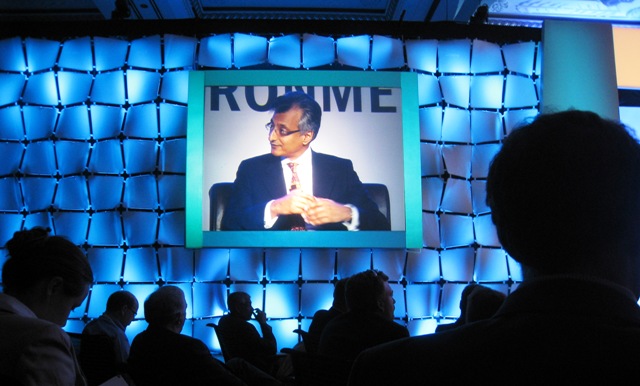
Abyd Karmali, Global Head of Carbon Emissions, Merrill Lynch

Mindy Lubber

In the distance, centre stage, an oil-rig
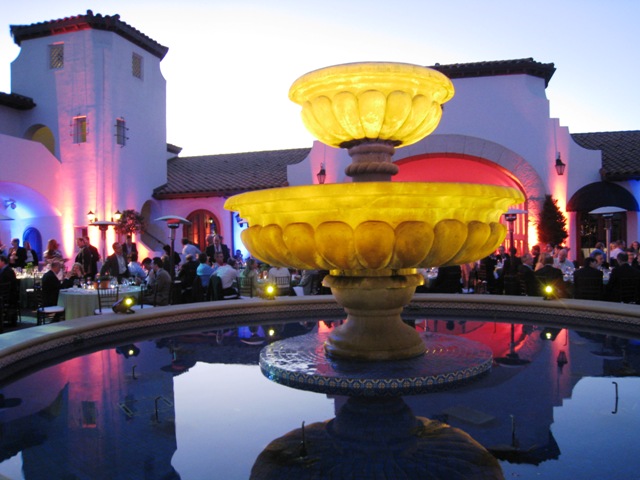
Dinner at the Bacara Resort & Spa

In the LAX lounge, I watched the planes go by – and tractors waltz to and fro – as I imbibed Schumpeter
Tuesday, March 11, 2008
Skoll 2 in design
Very lively meeting with Rupert Bassett and the team (Maggie, Alexa) on the design of the latest report produced as part of our Skoll Foundation-funded work. Getting to this point has been tough work for all, but I always enjoy this stage. This time we are focusing on social intrapreneurship, entrepreneurial work done on social and environmental challenges inside major companies.

Alexa (Clay), Maggie (Brenneke), me and Rupert (Bassett)

Ditto

Shooter shot (Sam)
Sunday, March 09, 2008
Power plated
Forced to lie upside down on the Power Plate this evening, to relieve the intense ache in my shoulder muscles from another day spent at the laptop, tapping away at the second in our series of reports for the Skoll Foundation, this time on social intrepreneurs. Worked most of the time at the kitchen table, from which I could see – through the glazed roof – the successive layers of rain cloud pass through. A large storm is meant to be on the way. Had been hoping to cycle to work tomorrow, but perhaps I’d end up in Kansas? What with having ‘flu for something like 6 weeks before it finally went, and travelling fairly intensively in the midst of it all, have not been cycling as much as I would have liked, and am seriously mising it. Still, got a modest walk in today, watching parakeets fly past against the gathering clouds.
Saturday, March 08, 2008
Snake’s Food
Interesting article by Charles Campion on wild garlic in today’s Independent Magazine. Known by some as Ramsons and by others as Snake’s Food, Stinking Jenny or Bear’s Garlic, I remember the plant well from when I was away at prep school near Wookey Hole and Wells, in Somerset. In the woods on the grounds there were areas of Ramsons, which I used to snack on – without at the time realising what they were. Then one evening, when all the boys were having supper, the headmistress – the redoubtable Mrs Adams – suddenly brought the proceedings to a grinding halt and demanded to know who had been eating garlic.
With no idea that this was what I had been eating, I stayed mum. So she embarked on a grand tour of the dining hall, smelling every boy’s breath, until she came to me. She was quite convinced that I had a stash of something like garlic sausage in my tuck-box. So an inspection of said tuck-box was duly initiated. When she heard that instead the aroma reflected the fact that I was in the habit of eating leaves, roots and berries around the grounds, she took it even worse than if the alleged sausage had been discovered. But, somehow, I had always had a sense of what was edible and what not – and continue to find Ransoms exquisitely beautiful to this day.
Unreasonable reader
Sam (Lakha) was in the British Library yesterday when she noticed that a nearby reader, apparently with much evident pleasure, was absorbed in The Power of Unreasonable People. So at least it’s out there.
Wednesday, March 05, 2008
The Hard Economics of Green
Am just starting the process of contributing to a Harvard Business Review online discussion on ‘The Hard Economics of Green’ (http://www.hbrgreen.org), following on from an initial post by Sir Stuart Rose on Marks & Spencer’s ‘Plan A’ (see http://www.hbrgreen.org/2008/03/the_hard_economics_of_green.html).


Leave a Reply